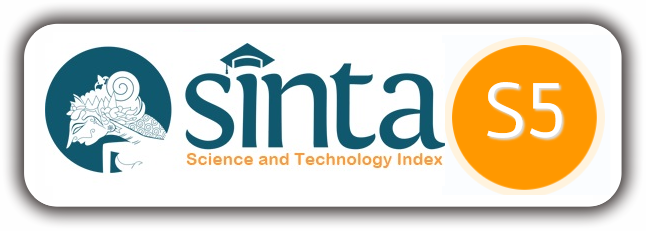Analysis of Regional Tax and Regional Retribution Contributions in Efforts to Increase Medan City's Original Regional Income 2020-2024
DOI:
https://doi.org/10.59525/jess.v4i2.946Keywords:
Restaurant Tax, Regional Revenue, Fiscal Decentralization, Digital TaxationAbstract
This study analyzes the contribution and effectiveness of restaurant tax in strengthening local revenue (PAD) in Medan City during 2020–2024. The research is motivated by the strategic role of the culinary sector as one of the pillars of urban economic activity and its potential as a sustainable source of fiscal capacity. Using a descriptive-analytical approach with mixed methods, data were obtained from secondary reports of the Regional Revenue Agency (BAPENDA) and primary insights from key stakeholders. The results reveal that restaurant tax consistently contributed more than 10% of PAD throughout the study period, peaking at 16.82% in 2023. This growth was driven by post-pandemic economic recovery, increasing community mobility, and the implementation of digital tax systems such as tapping box and e-SPTPD. Although the contribution slightly decreased to 15.52% in 2024, this was not due to sectoral decline but to diversification of other PAD sources. In terms of effectiveness, tax collection rose from a low level in 2020–2021 (76.9%) to above 90% in 2023–2024, indicating significant improvement in compliance and efficiency. The study concludes that restaurant tax plays a dual role: as a resilient revenue source and as a driver of fiscal modernization through digital transformation. Policy implications emphasize expanding digitalization, fostering taxpayer education for MSMEs, and diversifying PAD to reduce dependency on a single sector. These findings provide both theoretical insights into local tax governance and practical recommendations for fiscal policy in developing urban economies.
References
Ayu Lestari Siregar, Bela Harti Pratiwi, Reny Dian Aprilla, N. A., & Dewi. (2024). Analisis Pengaruh Pertumbuhan Ekonomi Terhadap Tingkat Pengangguran Di Kota Medan. Az-Ziyadah: Jurnal Ekonomi Syariah, I(2), 117–122.
Demitianus Murib, Rosalina A.M. Koleangan, K. D. T. (2018). Pengaruh Jumlah Penduduk, Pendapatan Perkapita, PDRB Terhadap Pad Di Kabupaten Mimika Provinsi Papua. Jurnal Berkala Ilmiah Efisiensi, 18(01), 23–33.
Hardani, N. A. (2020). Metode Penelitian Kualitatif dan Kuantitatif. Yogyakarta: Pustaka Ilmu.
Irmayani, I., Sari, I., & Sriwahyuningsih, A. E. (2021). Analisis Pendapatan Usaha Gula Aren Di Desa Buntu Pema Kecamatan Curio Kabupaten Enrekang. Jurnal Ilmiah Ecosystem, 21(2), 325–337. https://doi.org/10.35965/eco.v21i2.1109
Nababan, N. R., Lestari, E., Dayana, D. F., & Tarigan, M. (2024). Influence of Social Media and E-Commerce on MSME Income. 1(September), 47–56.
Nanda, I., & Izmuddin, I. (2024). Pengaruh Strategi Marketing Mix Terhadap Pendapatan Pedagang Kaki Lima Kuliner Kota Bukittinggi Dengan Digital Marketing Sebagai Variabel Moderasi. Azausin, 4(1), 208–226.
Saifuddin Azwar. (1998). Metode Penelitian. Yogyakarta: Pustaka Pelajar.
Sarah Nur Arifah, Yusrizal, K. T. (2022). Analisis Kontribusi Sektor Pertanian Dalam Meningkatkan Produk Domestik Regional Bruto (PDRB) Kabupaten Bener Meriah di Masa Pandemi Covid-19. El-Mujtama: Jurnal Pengabdian Masyarakat, 3(2), 542–579.
Sudarsono Sudarsono, & Adhi Surya Harahap. (2024). Efektivitas Penerapan E-Commerce Dalam Perkembangan Usaha Mikro Kecil dan Menengah di Kota Medan. Pajak Dan Manajemen Keuangan, 1(3), 151–164. https://doi.org/10.61132/pajamkeu.v1i3.339
Sugyono. (2015). Metode Penelitian Kuantitatif, Kualitatif dan Kombinasi (Mixed Methods). Bandung: Alfabeta.
Tetty Handayani Siregar, Nurul Aulia Dewi, Iskandar Muda, A. S., & Yusrizal. (2025). Pengaruh Pemahaman Dan Tingkat Kepercayaan Masyarakat Terhadap Rendahnya Inklusi Keuangan Berbasis Fintech Di Kabupaten Asahan. JSE: Jurnal Sharia Economica, 4(2), 160–171. https://doi.org/https://doi.org/10.46773/jse.v4i1
Downloads
Published
How to Cite
Issue
Section
License
Copyright (c) 2025 M. Mahdi Saman Alfarizie

This work is licensed under a Creative Commons Attribution 4.0 International License.









